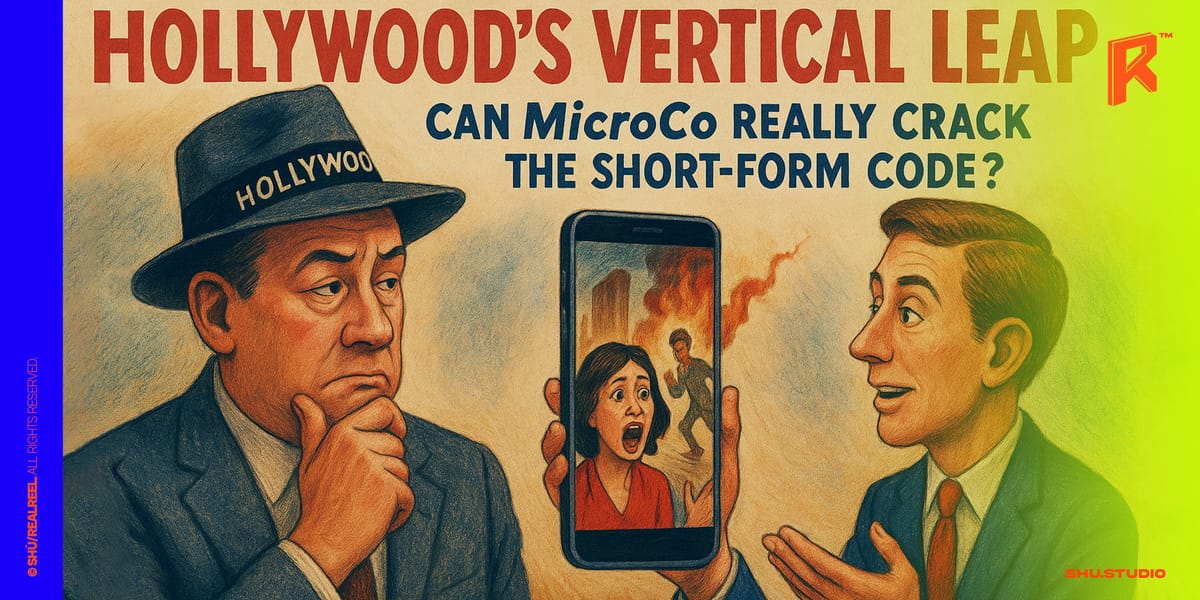Hollywood’s Vertical Leap: Can MicroCo Really Crack the Short-Form Code?
This piece is by 9:16.

This piece is by 9:16.
Scroll long enough on TikTok or Douyin and you’ll stumble onto something strange: two-minute dramas with cliffhangers so sharp they make prestige TV look sluggish. In Asia, this “micro-drama” phenomenon has already turned into a billion-dollar industry.
Now, finally, Hollywood wants in.

Cineverse’s Chris McGurk and Lloyd Braun’s Banyan Ventures just announced MicroCo, a new short-form content studio. They are not playing small either. Former Showtime president Jana Winograde is taking the CEO chair, and Warner Bros./NBCU alum Susan Rovner joins soon as chief creative officer. That is a heavy-hitter lineup for a platform where episodes are shorter than your morning coffee order.
Why MicroCo Might Matter
Hollywood has always loved scale: IMAX screens, $200M blockbusters, season arcs that demand your entire weekend. But MicroCo’s promise is the opposite.
It is about 1–2 minute vertical episodes built for the endless scroll.
If that sounds trivial, it isn’t. In Korea and China, short dramas have already proven that ultra-low-budget storytelling can hook audiences, mint new IP, and even fuel merchandising empires. The logic is seductive: cheaper to make, faster to produce, and perfectly tuned for the “I’ll just watch one more” dopamine loop.
Still, this is not just about economics. Braun frames it as a mash-up: the rigor of scripted TV meets the intimacy of short-form video.
Imagine the addictive pacing of TikTok blended with the narrative discipline of HBO. Could that actually work?
The Upside (If It Works)
-IP Lab: A viral two-minute thriller could evolve into a feature film or franchise. In other words, vertical content becomes Hollywood’s new R&D pipeline.
-Brand Money: Cineverse already has FAST channels and streaming infrastructure. That means MicroCo can plug into ads, product placement, and creator partnerships quickly.
-Legitimacy: Most importantly, Hollywood’s involvement reframes microdramas as more than “phone snacks.” It is a way of saying this is cinema too, just reframed for the thumb.
But Let’s Be Real
The hurdles are huge. MicroCo’s budgets will be tiny, which likely means union talent stays out. Will big-name writers or directors touch this space?
And even if they do, will American audiences really download yet another app, when TikTok and YouTube already dominate the scroll?

There is also the creative risk. Can you squeeze emotional weight into 90 seconds without it feeling like a gimmick? Asia’s creators have cracked that code. Hollywood, historically slower to adapt, still has to prove it can.
A Vertical Future
That said, the timing is uncanny. Viewers are restless, phones are our default screens, and the appetite for quick, emotional, mobile-first stories is only growing. If MicroCo succeeds, it could build a pipeline where IP is born vertically and then scaled horizontally, something like Marvel meets TikTok.
But here is the real test. Will MicroCo’s shows feel disposable, or will they be the kind of micro-stories you remember after you have scrolled past a hundred others? If it is the latter, then Hollywood’s vertical leap will not just be a side hustle. It will be the start of a new chapter in storytelling.





